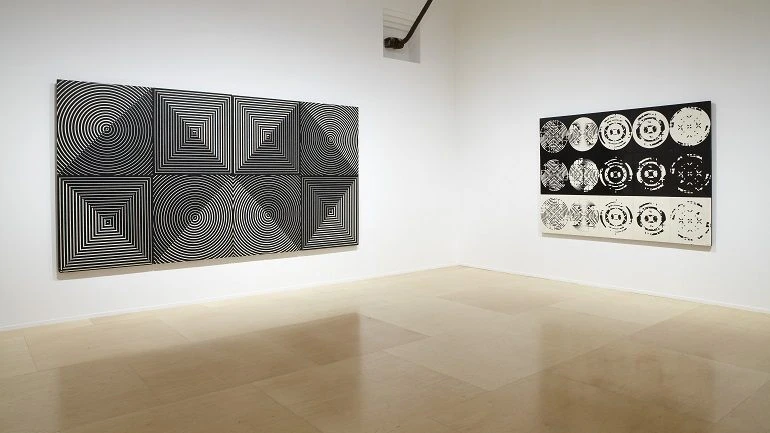Elena Asins
Fragments of Memory
She is considered one of the pioneers of computer-assisted art in Spain. Linked to some of the most innovative movements in Spain's recent art history, such as the Centro de Cálculo de la Universidad Complutense de Madrid (Computing Centre of Madrid Complutense University), Asins has used a wide array of formats and media (from concrete poetry to video, from drawings to sculpture and installations). Her work is always characterized by its compositional rigor and formal refinement.
This exhibition demonstrates how her art makes visible one of the most fascinating certainties in the world of mathematics: Ramsey's theorem, which states that complete disorder is impossible in the universe. Asins takes a similar approach to the semiotic dimension, which she studied at Columbia University under Noam Chomsky and in which, using a neo-Cartesian understanding of universal grammar, she restricts linguistic variability to the use of global concepts. Her works of art can be understood as visual metaphors always containing that which is non-intelligible and which remains as a parenthesis or silence in structuralist theory.
Examined under the logic/non-logic of aporias as models of thought, the plastic discoveries made by Asins bring together seemingly disparate interests: music and historiography in her Cuartetos Prusianos (1979-1981), philosophy and religion in Shalom Elechen [Shalom Aleichem] / The Enigma 3 (1987), Ludwig Wittgestein / Zettel (1986), One Possibility of Metanoia 5 (ca. 1985-86), and Mondrian's neoplasticism joined with the aesthetics of Max Bense and concrete poetry in Paradigma [Paradigm] for Scale (1982-1983).
In this regard, on the subject of her relationship with dance, the artist conveys, in verses dating from 1978, the vacuum that exists behind all sense of order: there is no down nor up / back, front / to one side / to all sides, to any side/ to any side because it's all the same / that's why they dance unceasingly/ there is no down nor up*.
* no hay abajo ni arriba / atrás, adelante / a un lado / hacia todos lados, hacia cualquier lado / hacia cualquier lado porque todo es lo mismo / por eso ellas danzan incesantemente / no hay abajo ni arriba.
Artists
Museo de las Artes de la Universidad de Guadalajara, Mexico (November 24, 2017 - February 18, 2018)
Organised by
Museo Nacional Centro de Arte Reina Sofía
Image gallery



Itinerary
Museo Nacional Centro de Arte Reina Sofía, Madrid
14 June, 2011 - 31 October, 2011
Museo de las Artes de la Universidad de Guadalajara, México
24 November, 2017 - 18 February, 2018
